Sennheiser Ambeo Mini review: mini size, massive sound
Sennheiser's soundbar range adds its smallest model to date, but can it deliver big on sound? Read our Ambeo Mini review...

In isolation the Ambeo Mini is an excellent soundbar - and it remains excellent in many ways even when put into context. But there’s just a slight disconnect between the way it performs and the money it will cost you.
-
+
Considerable low-end presence (without separate sub)
-
+
Positive, articulate and quite forceful sound
-
+
Numerous excellent control options
-
-
Not as much sonic ‘height’ as is ideal
-
-
Can lack definition with music
-
-
Not in any way cheap
Why you can trust T3

Despite what might seem like considerable impediments to success, mostly concerning the size of the price tag and the size of the product, both of Sennheiser’s Ambeo spatial audio soundbars have been extremely successful (those being the original Ambeo and (oddly smaller-size) Ambeo Plus).
Now Sennheiser is going for the best soundbars hat-trick - and with this new Ambeo Mini (which is even smaller again) it’s shrunk the size to a very manageable level and the asking price to something approaching ‘reasonable’. Is this going to be enough to ensure that three is the magic number?
Sennheiser Ambeo Mini: price & availability
The Sennheiser Ambeo Mini is on sale from 1 September 2023, and in the United Kingdom it’s priced at £699. The going rate in the United States is $799. While in Australia you’ll have to fork out AU$1299.
So just because this is Sennheiser’s most affordable Ambeo soundbar so far, it doesn’t really look like any kind of bargain - and there are plenty of alternatives at similar money, from brands as serious as Samsung, Sonos and Sony (to name just those starting with ‘S’) that seem, on paper at least, to offer a little more for your money. At least in physical terms, anyway…
Sennheiser Ambeo Mini review: features and what's new?
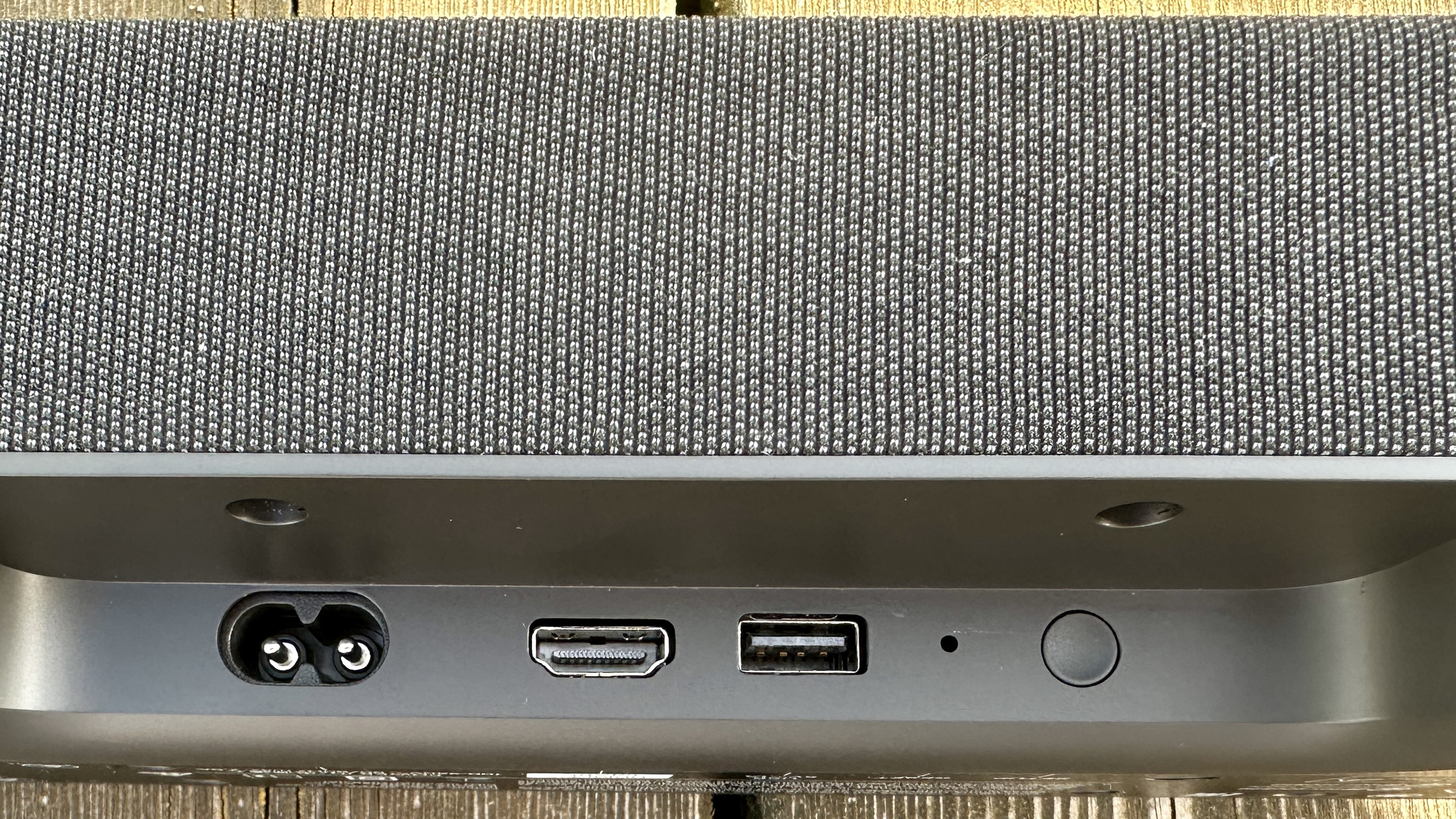
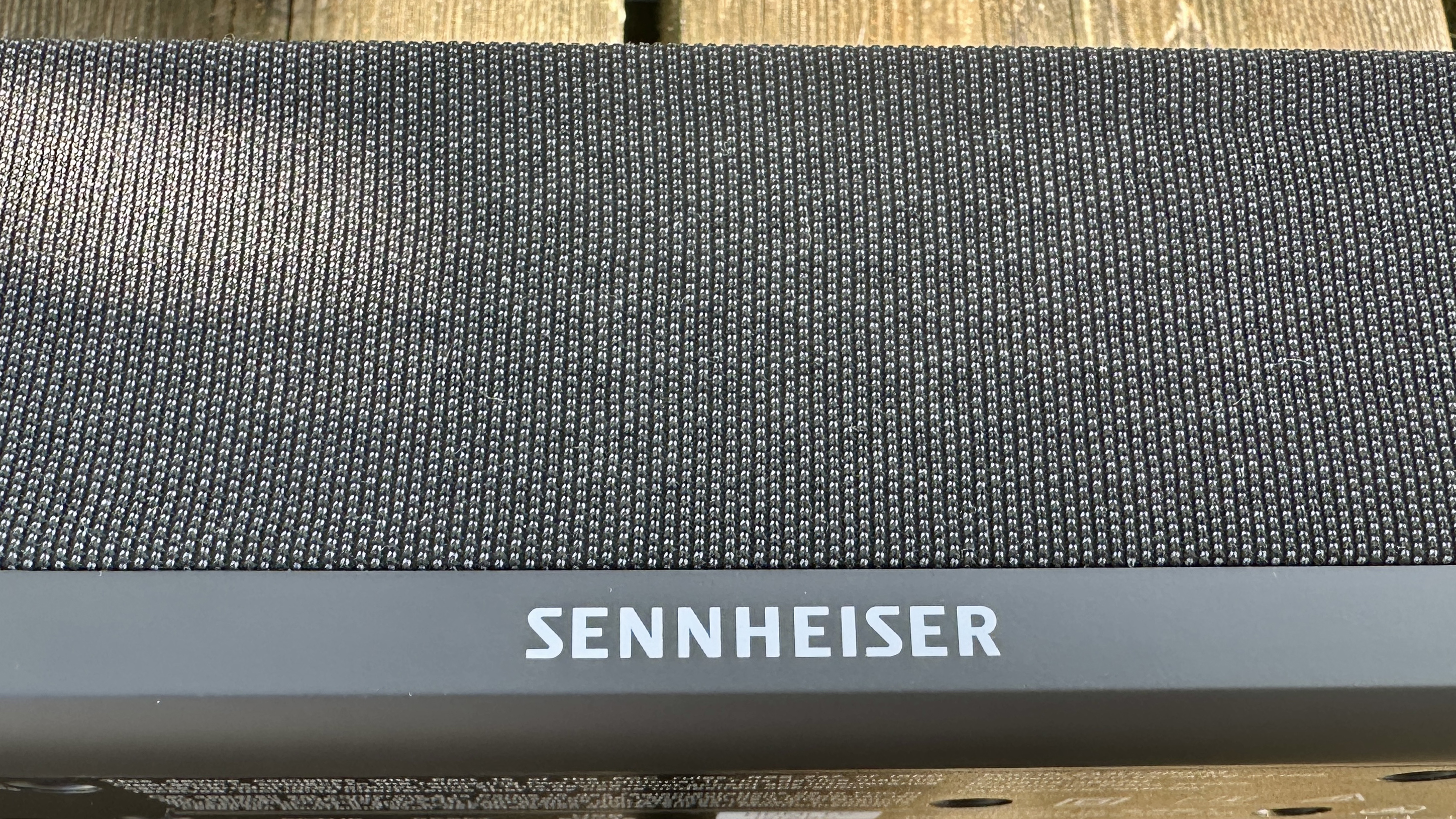
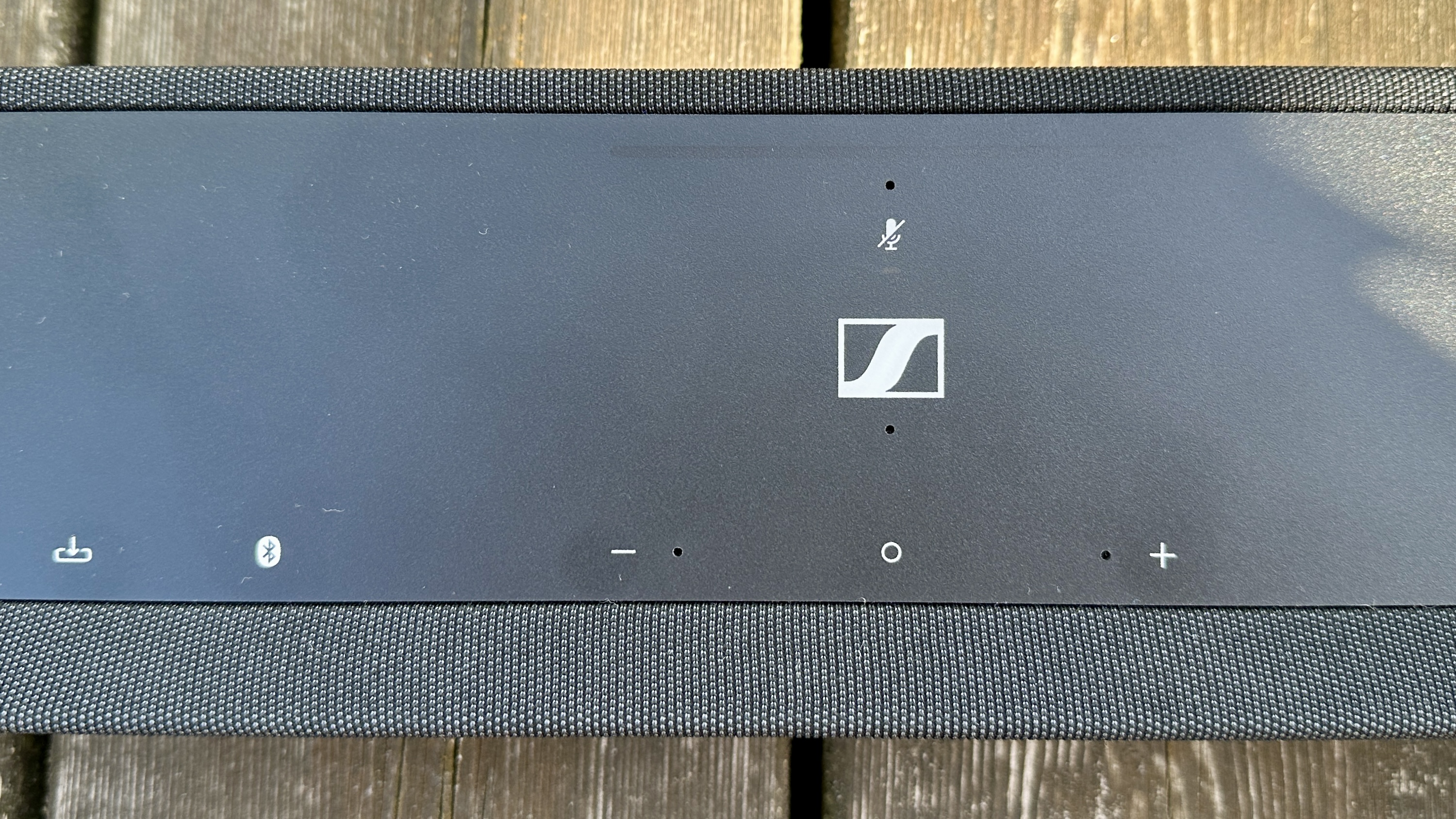
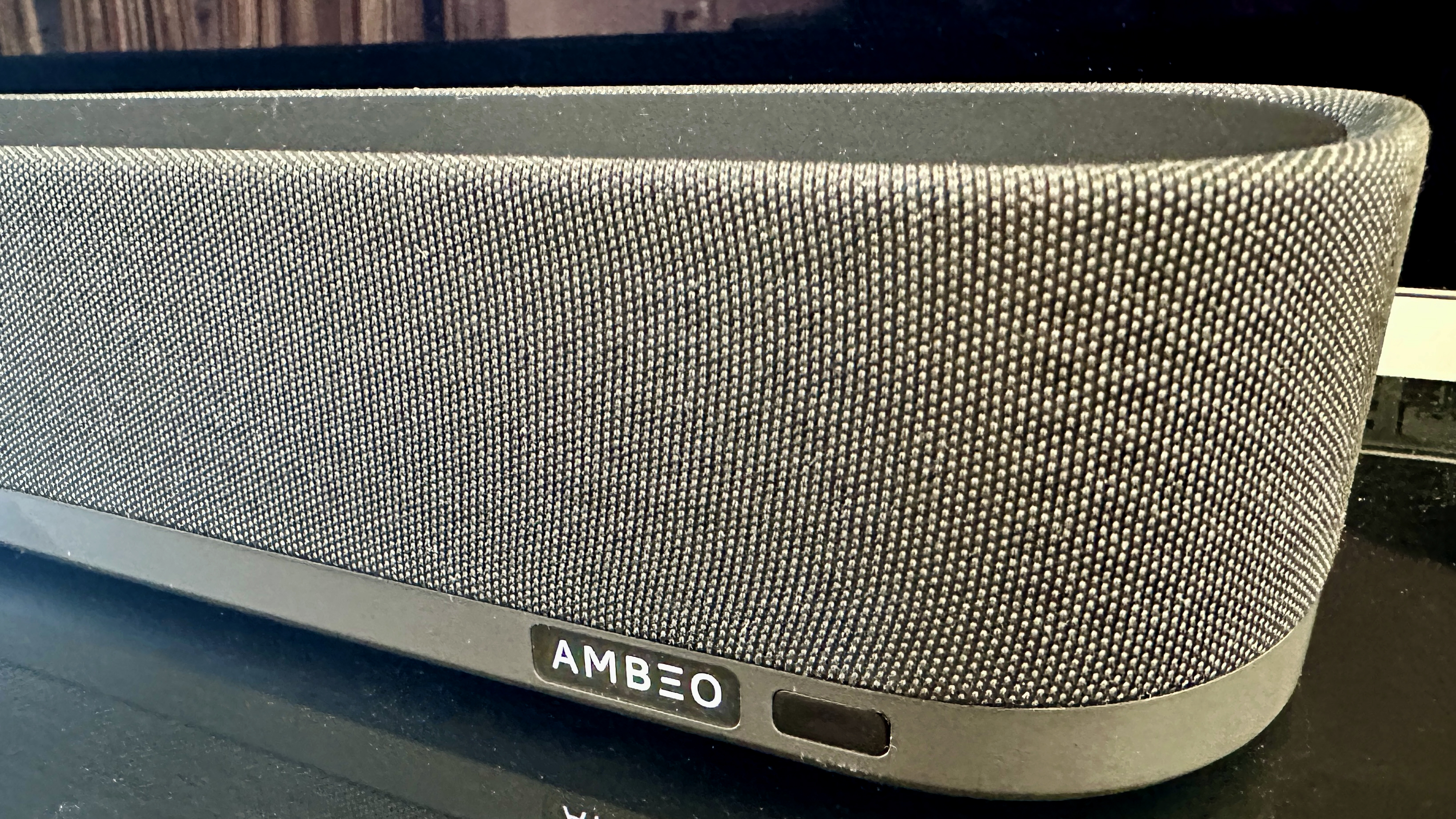
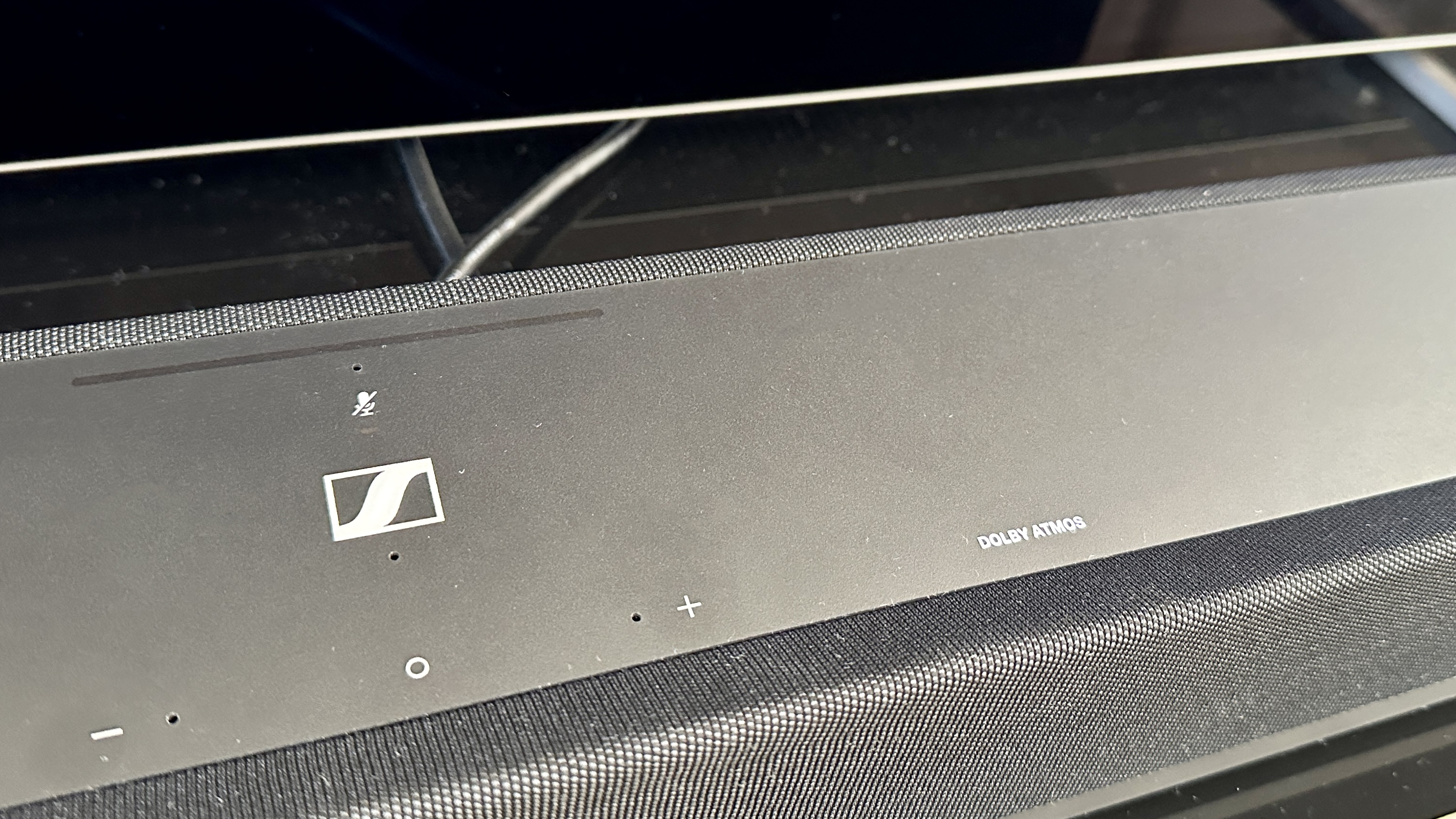
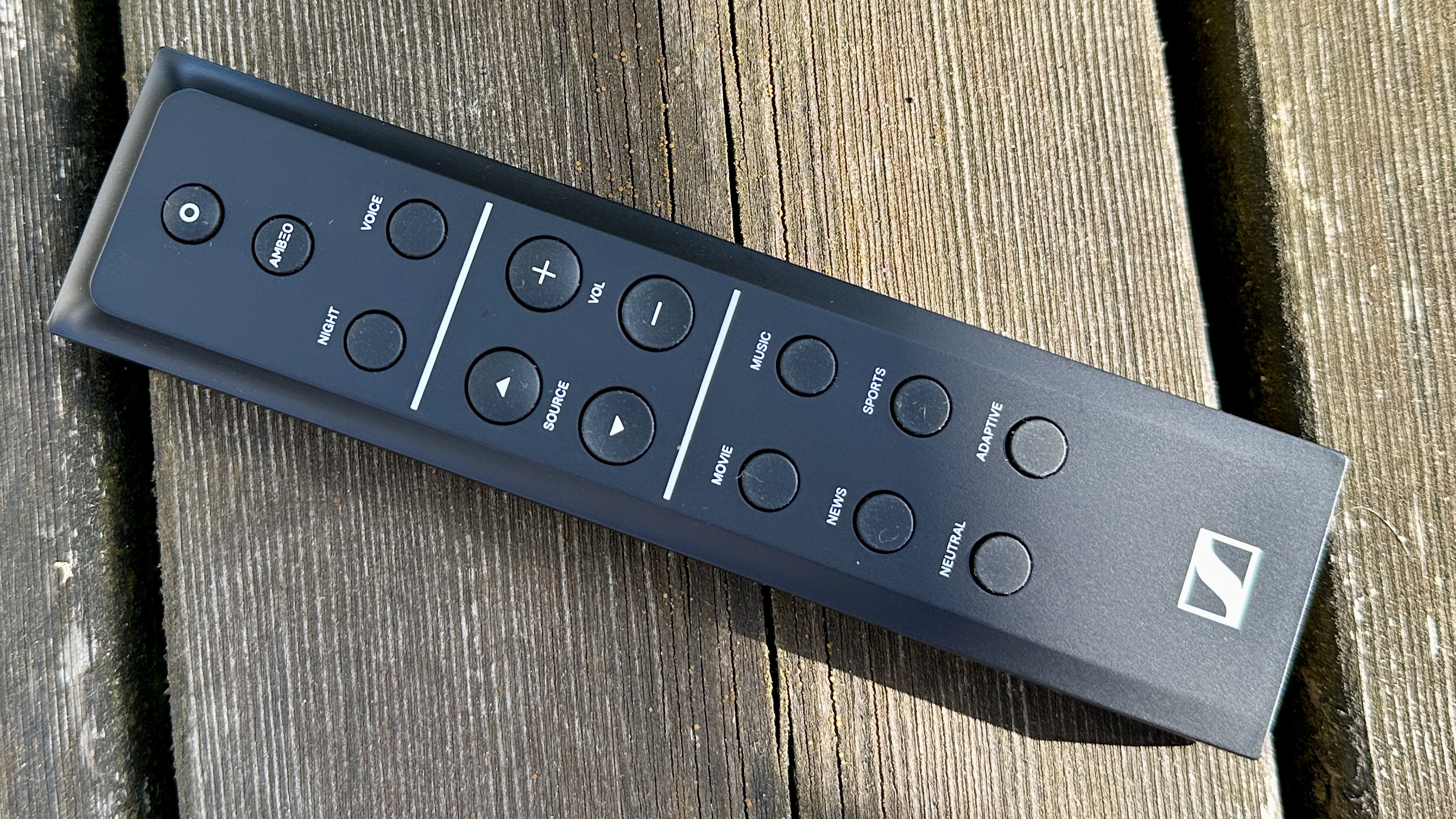
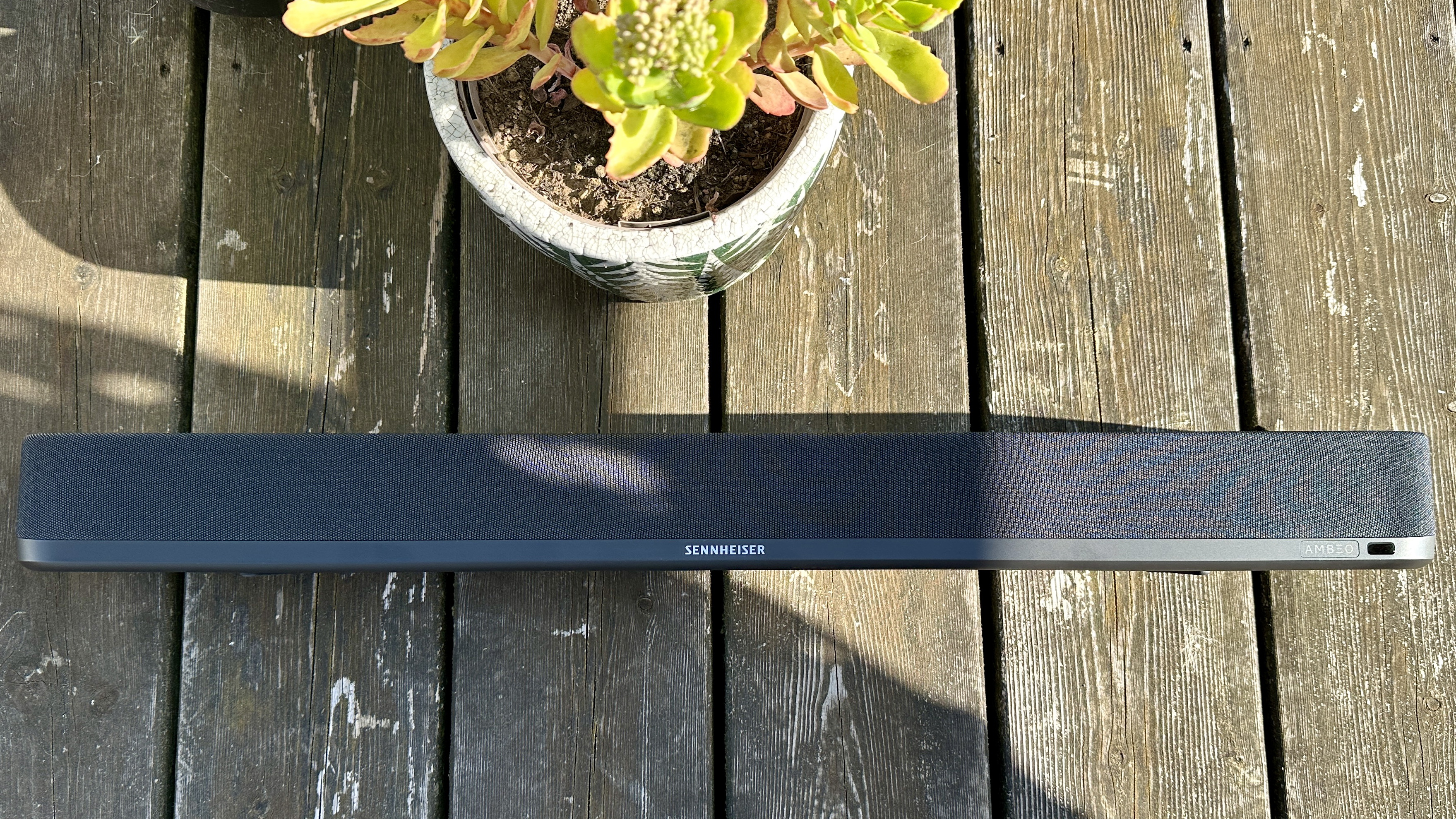
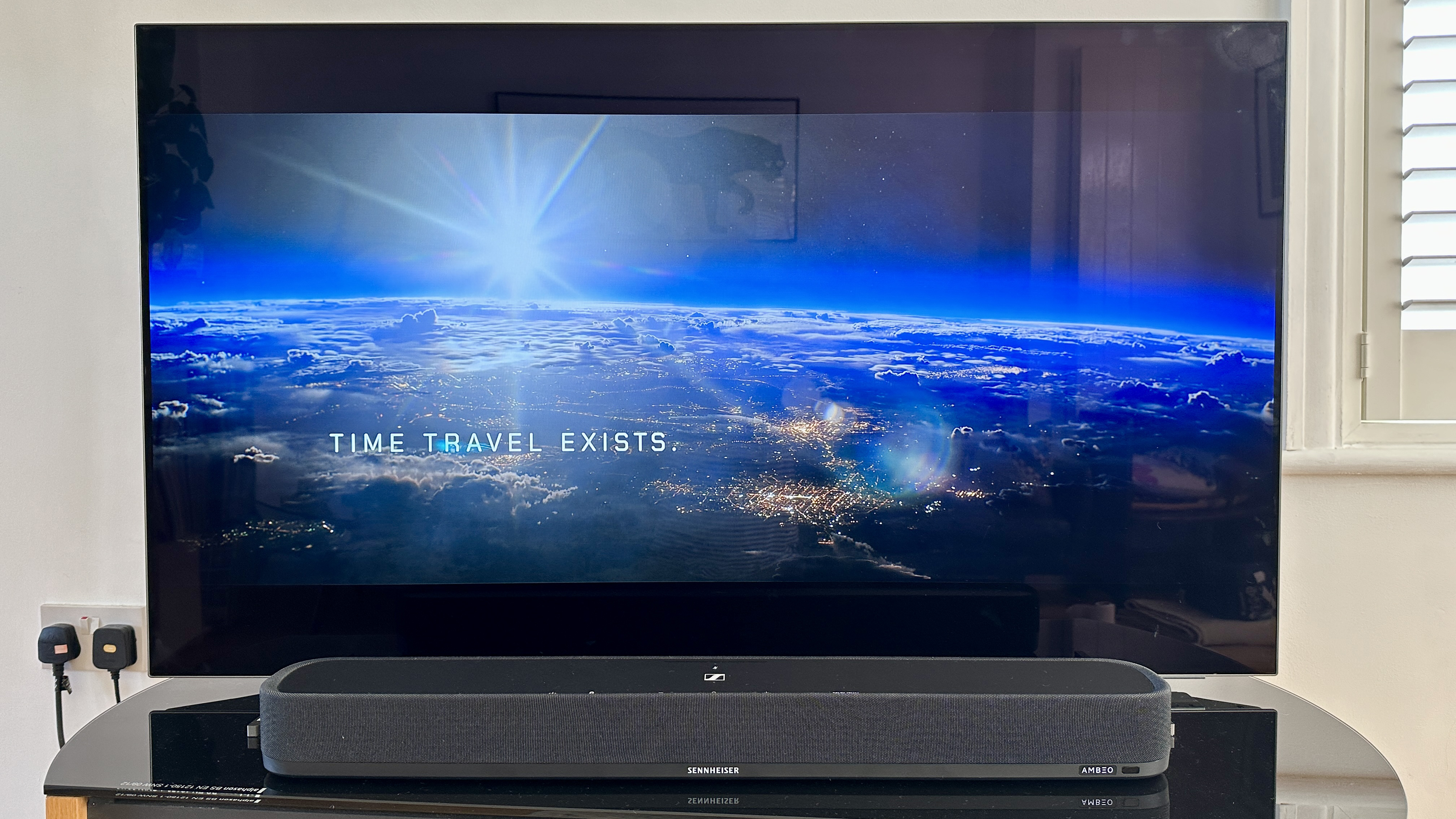
Unlike the bigger, pricier Ambeo soundbars in the Sennheiser range, the Ambeo Mini doesn’t have dedicated physical drivers creating the sensation of sonic ‘height’ (that is the whole point of spatial audio soundtracks and recordings). Instead, the Mini uses six drivers in conjunction with some extremely potent virtualisation technology (developed in association with Fraunhofer) to create what Sennheiser confidently claims is the suggestion of 7.1.4 -channel sound. And it’s not restricted to Dolby Atmos content either - the Ambeo Mini is compatible with MPEG-H, DTS:X and 360 Reality Audio too.
All six of these drivers are made from cellulose, and all six contribute to the virtual ‘top’ effects that constitute the ‘height’ element of the presentation. Two are 102mm bass drivers concealed behind the plastic top panel - their job is to dig down to the Ambeo Mini’s claimed frequency extension of 43Hz. The other four are 38mm full-range drivers - there’s one at either end of the chassis, facing outwards and giving some width to the sound, and the other two face forwards to generate the impression of ‘left/centre/right’ channels. There is a total of 250 watts of Class D power on board to drive them.
Getting the audio information on board in the first place can be done in a number of ways. There’s an HDMI eARC input - it’s in a little recess on the rear of the chassis, where it’s joined by an USB-A slot, a socket for mains power, a button engaging ‘set-up’ and another for ‘reset’ (which is, of course, the nuclear option). That’s it for physical connectivity, it should be noted - there’s no sign of the HDMI passthrough that any number of similarly priced alternatives provide.
Wireless options are a little more extensive. As well as Wi-Fi and Bluetooth 5.0 (with SBC and AAC codec compatibility), Apple AirPlay 2, Chromecast, UPnP, Spotify Connect and Tidal Connect are all catered for - and AirPlay 2 and Chromecast compatibility mean it’s simple enough to include the Ambeo Mini in a multi-room system, too.
Sennheiser Ambeo Mini review: performance

The automatic room calibration routine in the ‘Smart Control’ app does its thing both rapidly and accurately - and once it’s finished, the Ambeo Mini understands its environment and trims its performance accordingly. And this is performance, it doesn’t take long to realise, that is more assertive and more forceful than you might have been anticipating.
Given that its low frequencies are generated by a couple of modestly-sized drivers operating in a modestly-sized cabinet, the Sennheiser’s bass performance is remarkable. That it digs down all the way to 43Hz seems entirely likely, and the low-end stuff it generates is substantial, well-controlled, punchy and detailed. There’s decent variation to bass sounds here, rather than just the monotonal thumping less accomplished designs deliver, and while there’s plenty of impact the bottom-end stays in its lane and lets all the frequency information above express itself unhindered.
The rest of the frequency range is similarly detailed, and shares the same sort of deftly neutral tonality. Voices in the midrange are rendered with character and nuance intact, while the top of the frequency range has a remarkable amount of bite and shine when you consider there are no actual tweeters on board the Ambeo Mini. Integration from top to bottom is smooth, and dialogue projects well - even though it’s delivered as part of a whole rather than as a separate entity.

Dynamic headroom is considerable, and the Sennheiser can put quite a distance between the quietest, most atmospheric moments in a movie soundtrack and the climatic action-packed pile-ons - and can do so in an instant, what’s more. The soundstage it creates is impressively large considering the size of the soundbar itself, and there’s considerable width to the ‘left/centre/right’ front channel layout.
What there’s a slight shortage of, though, is the ‘height’ element that’s a big part of the appeal of spatial audio content. In the best circumstances - when it’s in receipt of some full-on Dolby Atmos content from a UHD Blu-ray disc - the Ambeo Mini generates an unexceptional facsimile of the ‘top’ effects in the soundtrack. Certainly it’s not capable of extending sound above the top of your TV screen. It follows that when the Ambeo virtualisation technology is asked to do its 7.1.4 -channel thing with 5.1 or two-channel stuff, the effect is more curtailed still.
Switch to some music, and if it’s some Dolby Atmos-mastered content via Tidal Masters then the story is much the same: heft and momentum, detail and drive, and a stage that’s wider and deeper than it is tall. Focus is good, rhythmic expression is decent, and the Sennheiser is pretty attentive to even quite transient or minor variations in tone and texture. If it’s stereo music, though, it’s best to leave the Ambeo virtualisation well alone - listen to it in stereo and there’s lots to like. Try to get the Ambeo Mini to force a sensation of spatial audio, though, and much of the focus and positivity goes astray in favour of a rather hazy and vague alternative.
Sennheiser Ambeo Mini review: design & usability
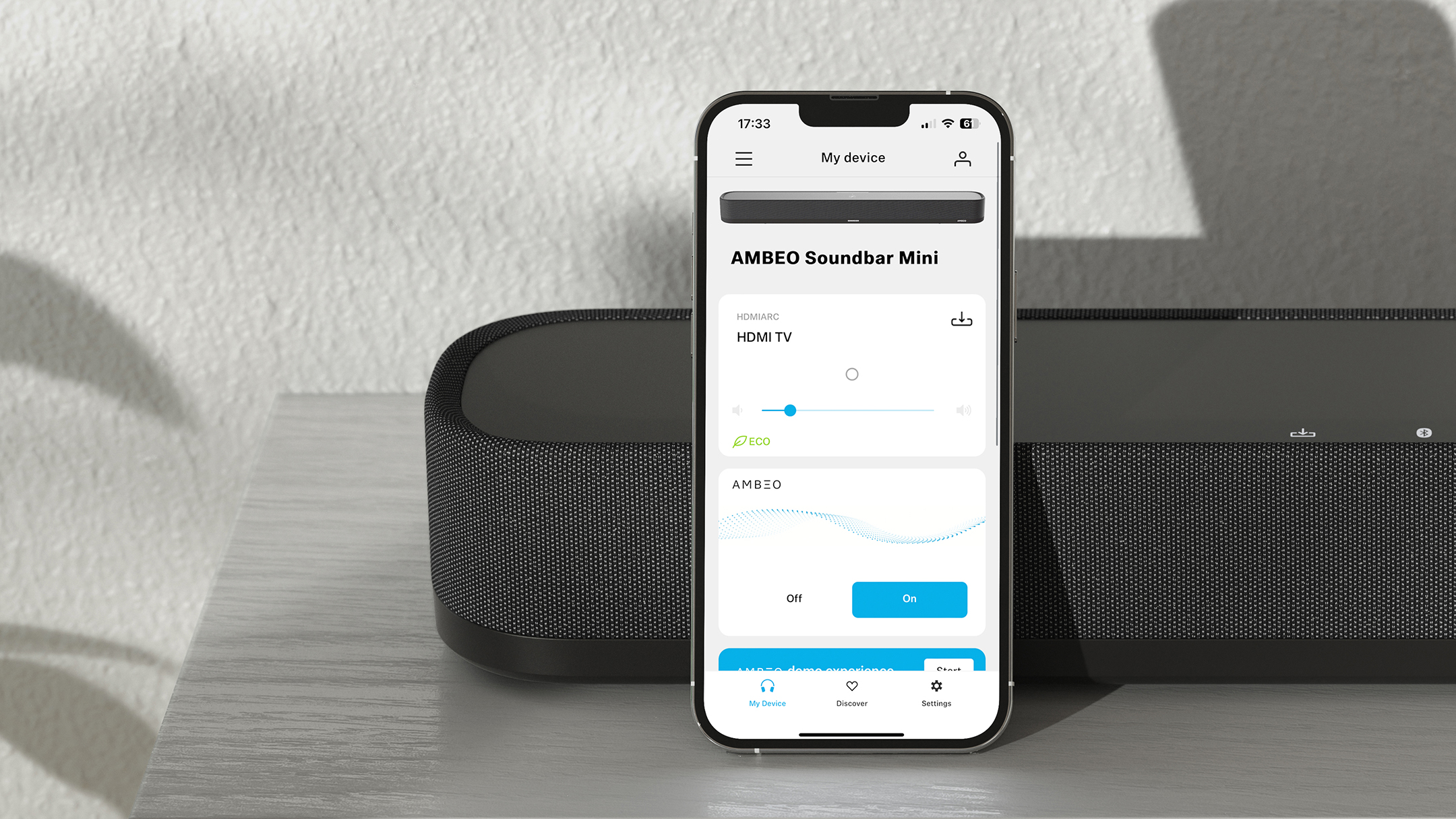
Obviously the asking price puts it at a different level, but in terms of broad design the Sennheiser Ambeo Mini has a lot in common with the Sonos Beam Gen 2. At 65 x 700 x 100mm (HxWxD) the Sennhesier is of almost identical proportions, and at 3.6kg there’s not much difference on the scales either. The rounded edges of the chassis are more than a little reminiscent, too.
Elsewhere, though, the Ambeo Mini looks like nothing more than a shrunken version of its Ambeo Plus sibling. The way the top panel slopes to form a lip at the front of the soundbar, the way the black acoustic cloth wraps around all four sides and onto the leading edge of the top panel… these are strong family resemblances. And the single option when it comes to colour, the flawless quality of build and finish, the use of mildly tactile plastic for the main body are all similarities too.
Setting up and using the Ambeo Mini couldn’t really be any more straightforward. Step one: put the soundbar where it’s going to live. Step two: make connections to mains power and to your TV using the HDMI eARC socket. Step three: keep nice and quiet while the automated room calibration software in the ‘Smart Control app’ does its thing. And there’s no step four.
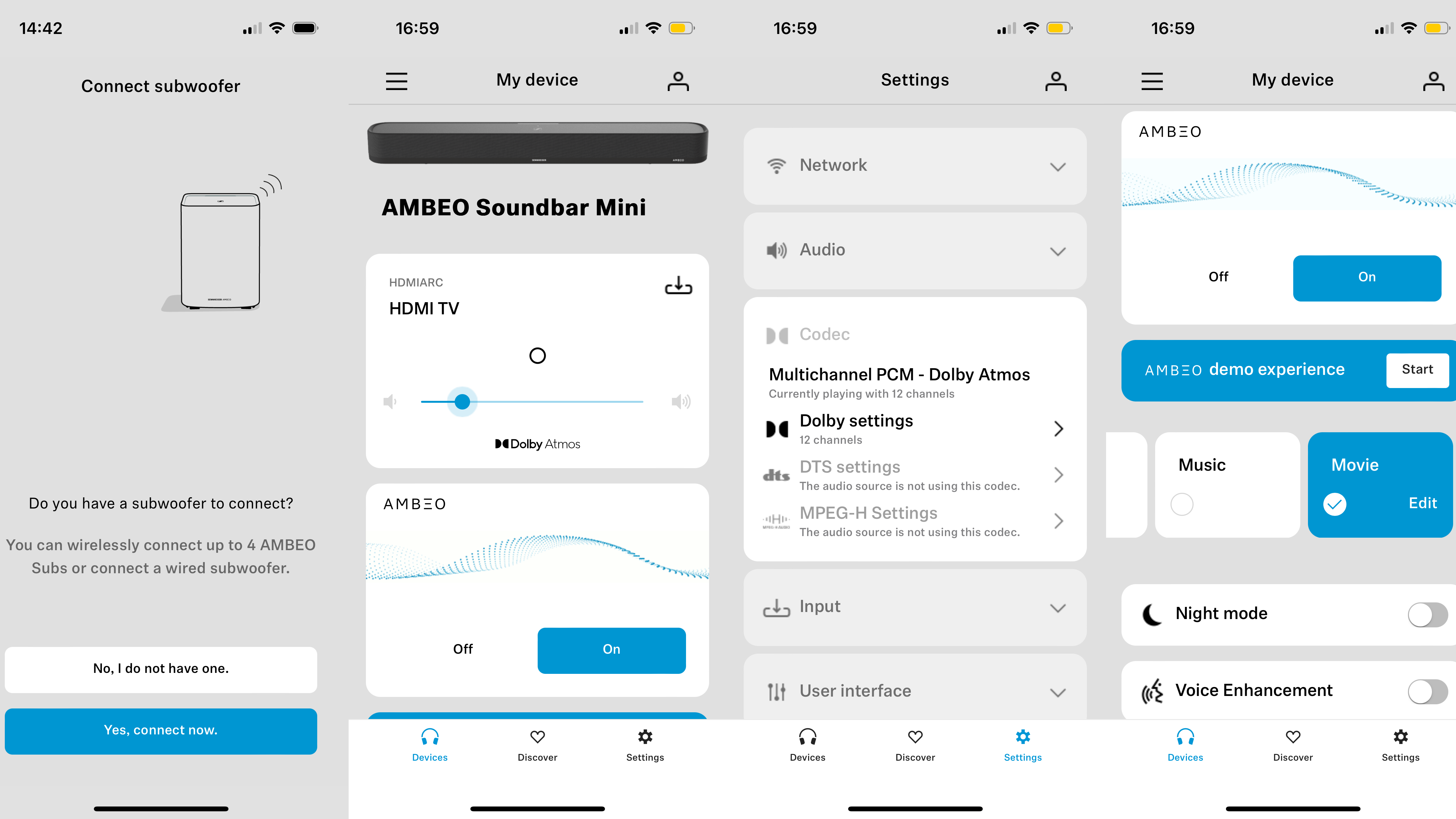
And the app is more than a little useful after setup is complete. It gives you the option to switch Sennheiser’s Ambeo virtualisation technology on or off, and to select from one of six EQ settings to best suit the content you’re watching. It lets you change inputs, check for software updates and adjust volume levels. It gives access to ‘voice enhancement’, which gives the centre channel a little boost, and to the ‘night mode’ feature that evens out dynamic response. As is the established Sennheiser way, it’s logical, stable and absolutely crystal clear.
There’s also a remote control handset for the more traditional among us. It’s a fairly big, weirdly angular number, with pretty much every major function included and some woefully small lettering above the buttons themselves. It could use some backlighting, but in general terms it's one of the better examples of the type.
There are four far-field mics embedded in the top of the Ambeo Mini, and as well as taking care of the automated setup process they also allow you to control the soundbar using your voice. Amazon Alexa is built in, and Google Assistant is available if you’ve got an appropriately talented speaker on a common network. You can defeat these mics, though, as well as control the most major functions of the Ambeo Mini, using the brief selection of capacitive touch controls on the soundbar’s top surface.
Sennheiser Ambeo Mini review: Verdict
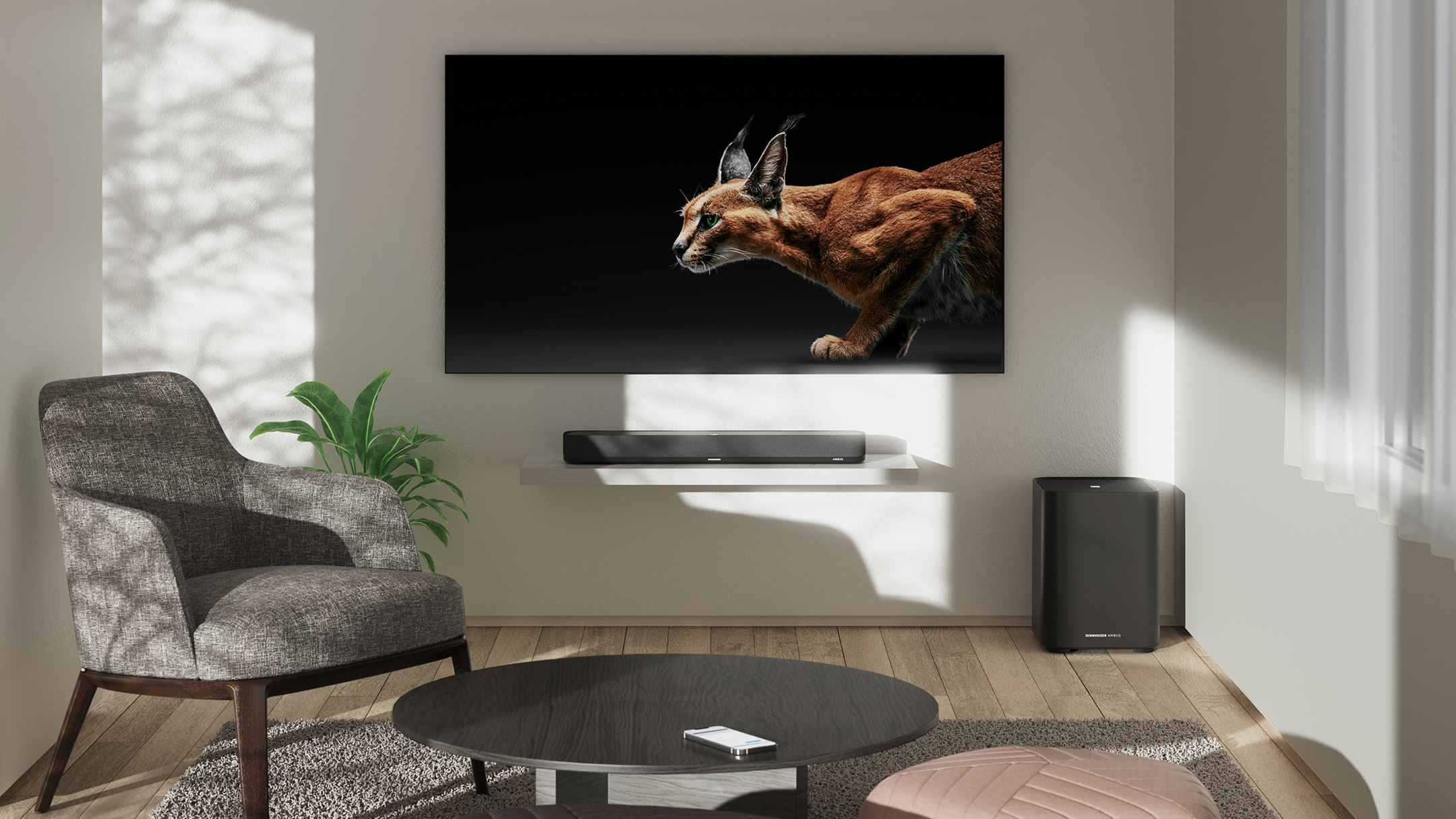
The Ambeo Mini has an awful lot going for it, that’s not up for question - but judged dispassionately it’s not quite Dolby Atmos-y enough for the money, and/or it’s a little too expensive for such a compact device with such decent (and more affordable) opposition.
If you're seeking a discreet, well-made soundbar with impressive full-frequency response and a way bigger sound than seems feasible then this Sennheiser has you more than covered. It's the ideal soundbar if you never want to buy a separate subwoofer. It's an ideal soundbar if you want massive sound from a mini scale too.
Also consider
If the Ambeo Mini’s dimensions are appealing, you need to check out the almost identically sized Beam Gen 2 by Sonos. It too virtualises its spatial audio sound, it too is discreet enough for use in smaller rooms with smaller screens… but it’s usefully more affordable than the Sennheiser.
If you’re fine with the Sennheiser's asking price, though, and have a bit of space for your new home cinema sound system, Samsung’s HW-Q930B buys you an awful lot of stuff (including rear speakers and a subwoofer) and, as a result, a more immersive listening experience.
Sign up to the T3 newsletter for smarter living straight to your inbox
Get all the latest news, reviews, deals and buying guides on gorgeous tech, home and active products from the T3 experts
Simon Lucas is a freelance technology journalist and consultant, with particular emphasis on the audio/video aspects of home entertainment. Before embracing the carefree life of the freelancer, he was editor of What Hi-Fi? magazine and website – since then, he's written for titles such as Wired, Metro, the Guardian and Stuff, among many others. Should he find himself with a spare moment, Simon likes nothing more than publishing and then quickly deleting tweets about the state of the nation (in general), the state of Aston Villa (in particular) and the state of his partner's cat.
-
 How to watch Mario Kart World Direct – everything you need to know about the Switch 2 launch game
How to watch Mario Kart World Direct – everything you need to know about the Switch 2 launch gameNintendo will host a new Nintendo Direct presentation this week, here's how to watch it live and what to expect
By Rik Henderson Published
-
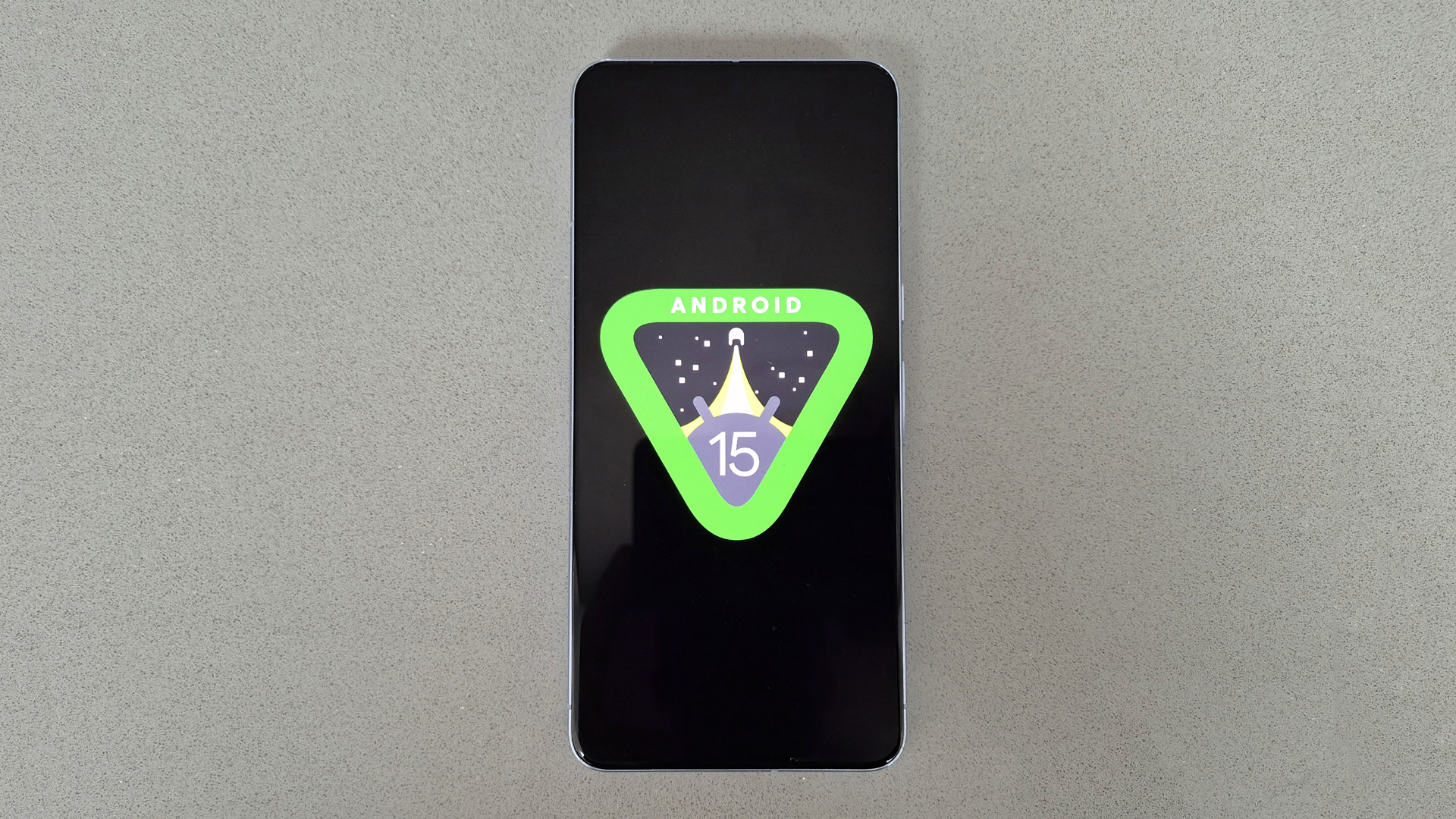 Google delivers bad news for budget Android phones
Google delivers bad news for budget Android phonesCheaper Android phones might need to change to meet new Google rules
By Chris Hall Published
-
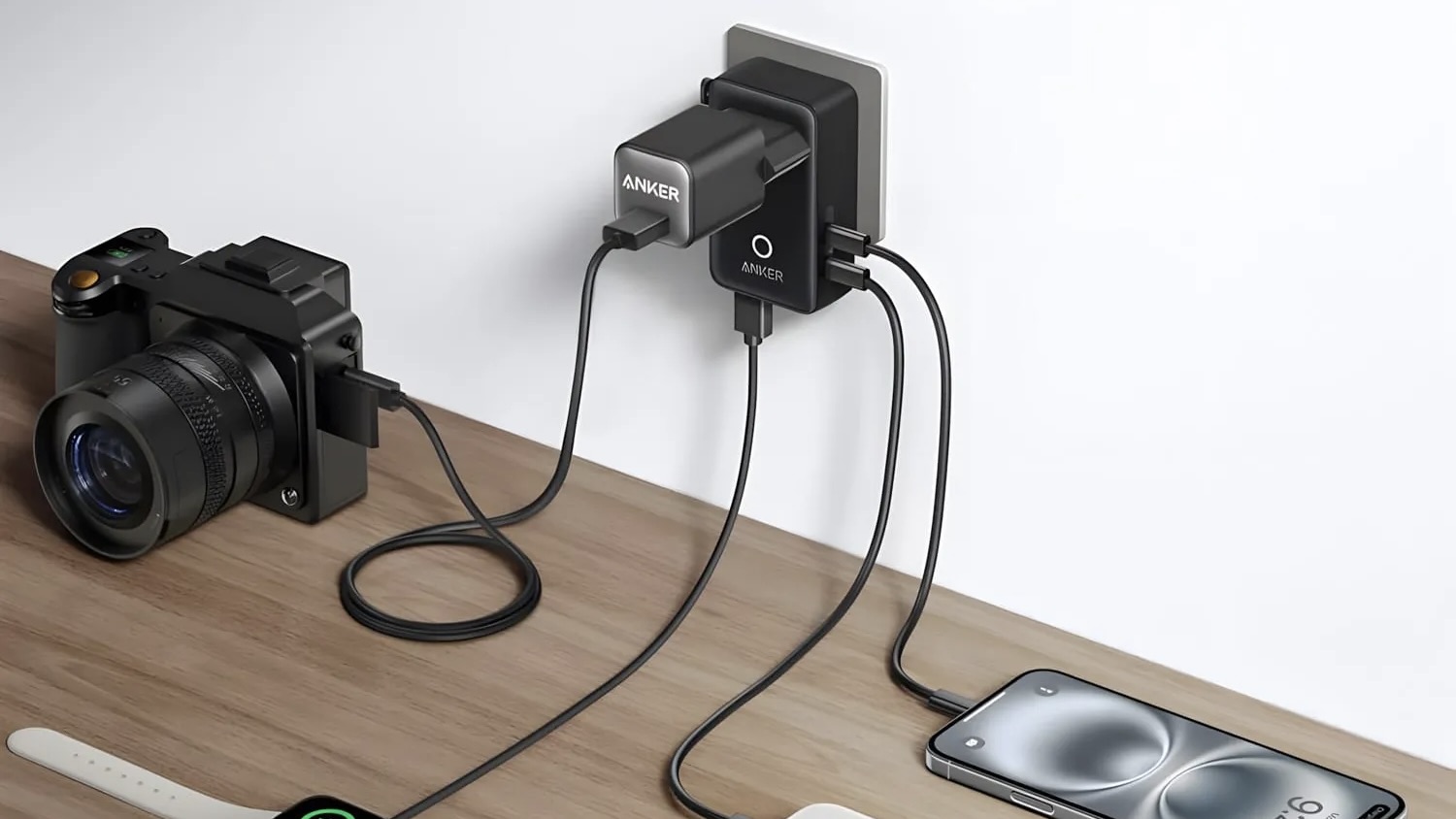 Anker's new 5-in-1 travel adapter is now available in more countries – phew!
Anker's new 5-in-1 travel adapter is now available in more countries – phew!It works in over 200 countries
By Lizzie Wilmot Published